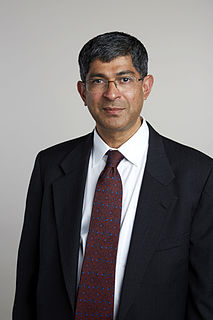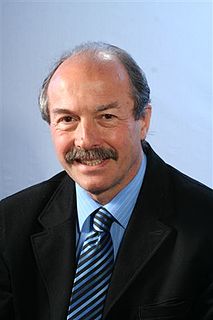
A protein kinase is a kinase which selectively modifies other proteins by covalently adding phosphates to them (phosphorylation) as opposed to kinases which modify lipids, carbohydrates, or other molecules. Phosphorylation usually results in a functional change of the target protein (substrate) by changing enzyme activity, cellular location, or association with other proteins. The human genome contains about 500 protein kinase genes and they constitute about 2% of all human genes. There are two main types of protein kinase. The great majority are serine/threonine kinases, which phosphorylate the hydroxyl groups of serines and threonines in their targets and most of the others are tyrosine kinases, although additional types exist. Protein kinases are also found in bacteria and plants. Up to 30% of all human proteins may be modified by kinase activity, and kinases are known to regulate the majority of cellular pathways, especially those involved in signal transduction.

Signal transduction is the process by which a chemical or physical signal is transmitted through a cell as a series of molecular events, most commonly protein phosphorylation catalyzed by protein kinases, which ultimately results in a cellular response. Proteins responsible for detecting stimuli are generally termed receptors, although in some cases the term sensor is used. The changes elicited by ligand binding in a receptor give rise to a biochemical cascade, which is a chain of biochemical events known as a signaling pathway.

A tyrosine kinase is an enzyme that can transfer a phosphate group from ATP to the tyrosine residues of specific proteins inside a cell. It functions as an "on" or "off" switch in many cellular functions.

In cell biology, protein kinase A (PKA) is a family of enzymes whose activity is dependent on cellular levels of cyclic AMP (cAMP). PKA is also known as cAMP-dependent protein kinase. PKA has several functions in the cell, including regulation of glycogen, sugar, and lipid metabolism. It should not be confused with 5'-AMP-activated protein kinase.

Anthony James Pawson was a British-born Canadian scientist whose research revolutionised the understanding of signal transduction, the molecular mechanisms by which cells respond to external cues, and how they communicate with each other. He identified the phosphotyrosine-binding Src homology 2 as the prototypic non-catalytic interaction module. SH2 domains serve as a model for a large family of protein modules that act together to control many aspects of cellular signalling. Since the discovery of SH2 domains, hundreds of different modules have been identified in many proteins.

Nucleoside-diphosphate kinases are enzymes that catalyze the exchange of terminal phosphate between different nucleoside diphosphates (NDP) and triphosphates (NTP) in a reversible manner to produce nucleotide triphosphates. Many NDP serve as acceptor while NTP are donors of phosphate group. The general reaction via ping-pong mechanism is as follows: XDP + YTP ←→ XTP + YDP. NDPK activities maintain an equilibrium between the concentrations of different nucleoside triphosphates such as, for example, when guanosine triphosphate (GTP) produced in the citric acid (Krebs) cycle is converted to adenosine triphosphate (ATP). Other activities include cell proliferation, differentiation and development, signal transduction, G protein-coupled receptor, endocytosis, and gene expression.

Receptor tyrosine kinases (RTKs) are the high-affinity cell surface receptors for many polypeptide growth factors, cytokines, and hormones. Of the 90 unique tyrosine kinase genes identified in the human genome, 58 encode receptor tyrosine kinase proteins. Receptor tyrosine kinases have been shown not only to be key regulators of normal cellular processes but also to have a critical role in the development and progression of many types of cancer. Mutations in receptor tyrosine kinases lead to activation of a series of signalling cascades which have numerous effects on protein expression. Receptor tyrosine kinases are part of the larger family of protein tyrosine kinases, encompassing the receptor tyrosine kinase proteins which contain a transmembrane domain, as well as the non-receptor tyrosine kinases which do not possess transmembrane domains.

John Kuriyan is Chancellor's Professor at the University of California, Berkeley in the departments of Molecular and Cell Biology (MCB) and Chemistry. He is also a Faculty Scientist in Berkeley Lab's Physical Biosciences Division, a Howard Hughes Medical Institute investigator, and a member of the National Academy of Sciences. He has also been on the Life Sciences jury for the Infosys Prize in 2009, 2019 and 2020.
A protein kinase inhibitor is a type of enzyme inhibitor that blocks the action of one or more protein kinases. Protein kinases are enzymes that phosphorylate (add a phosphate, or PO4) group to a protein, and can modulate its function.

The RETproto-oncogene encodes a receptor tyrosine kinase for members of the glial cell line-derived neurotrophic factor (GDNF) family of extracellular signalling molecules. RET loss of function mutations are associated with the development of Hirschsprung's disease, while gain of function mutations are associated with the development of various types of human cancer, including medullary thyroid carcinoma, multiple endocrine neoplasias type 2A and 2B, pheochromocytoma and parathyroid hyperplasia.

Yasutomi Nishizuka, MJA, ForMemRS was a prominent Japanese biochemist and made important contributions to the understanding of molecular mechanism of signal transduction across the cell membrane. In 1977, he discovered protein kinase C, which plays significant roles in a variety of intracellular signal transduction processes.

BRAF is a human gene that encodes a protein called B-Raf. The gene is also referred to as proto-oncogene B-Raf and v-Raf murine sarcoma viral oncogene homolog B, while the protein is more formally known as serine/threonine-protein kinase B-Raf.

David Julian Harry Downward FRS FMedSci is Associate Research Director at the Francis Crick Institute and Senior Group Leader at the Institute of Cancer Research. He was formerly head of the Signal transduction Laboratory at the London Research Institute. He is a member of the Editorial Board for Cell.
Natalie G. Ahn is a professor of chemistry and biochemistry at the University of Colorado at Boulder. Her research is focused on understanding the mechanisms of cell signaling, with a speciality in phosphorylation and cancers. Ahn's work uses the tools of "classical chemistry" to work on understanding the genetic code and how genetics affects life processes. She has been a professor at the University of Colorado at Boulder since 2003, where she is a Distinguished Professor. She was a Howard Hughes Medical Institute investigator between 1994 and 2014. In 2018, she was elected to the National Academy of Sciences and named a fellow of the American Academy of Arts and Sciences.

György Kéri was a Hungarian biochemist, professor and Doctor of Biological Sciences (D.Sc.). His major field of research was signal transduction therapy and he participated in the development of novel drug discovery technologies and drug candidates that entered the clinical development process.

Anthony Rex Hunter is a British-American biologist who is a Professor of Biology at the Salk Institute for Biological Studies and the University of California San Diego. His research publications list his name as Tony Hunter.

Rajendra Kumar Sharma is a professor at the Department of Pathology and Laboratory Medicine, University of Saskatchewan College of Medicine. He holds an earned Doctor of Science from the University of Saskatchewan, and was elected a Fellow of the Royal Society of the Arts (FRSA) in 2014. His contributions to research have been documented in the Encyclopedia of Saskatchewan – A Living Legacy. Sharma has made several discoveries in the areas of colorectal cancer and the cardiovascular system.

The Blue Ridge Institute for Medical Research (BRIMR) is an independent, non-profit, scientific research institute located in Horse Shoe, North Carolina. The Institute was founded by Robert Roskoski Jr., who serves as President and Scientific Director.
Gary L. Johnson is an American scientist and Professor recognized for his work with oncogenes and stem cells in the fields of molecular pharmacology and cancer cell biology. His other research interests include signaling networks controlling cell function and disease and the behavior of the kinome en masse in cancer.

Ping Zhang is an American structural biologist researching the structural and mechanistic basis of multi-component kinase signaling complexes that are linked to human cancers and other diseases, with a long-term goal of developing new therapeutic strategies. She is a NIH Stadtman Investigator in the Structural Biophysics Laboratory at the National Cancer Institute.

















